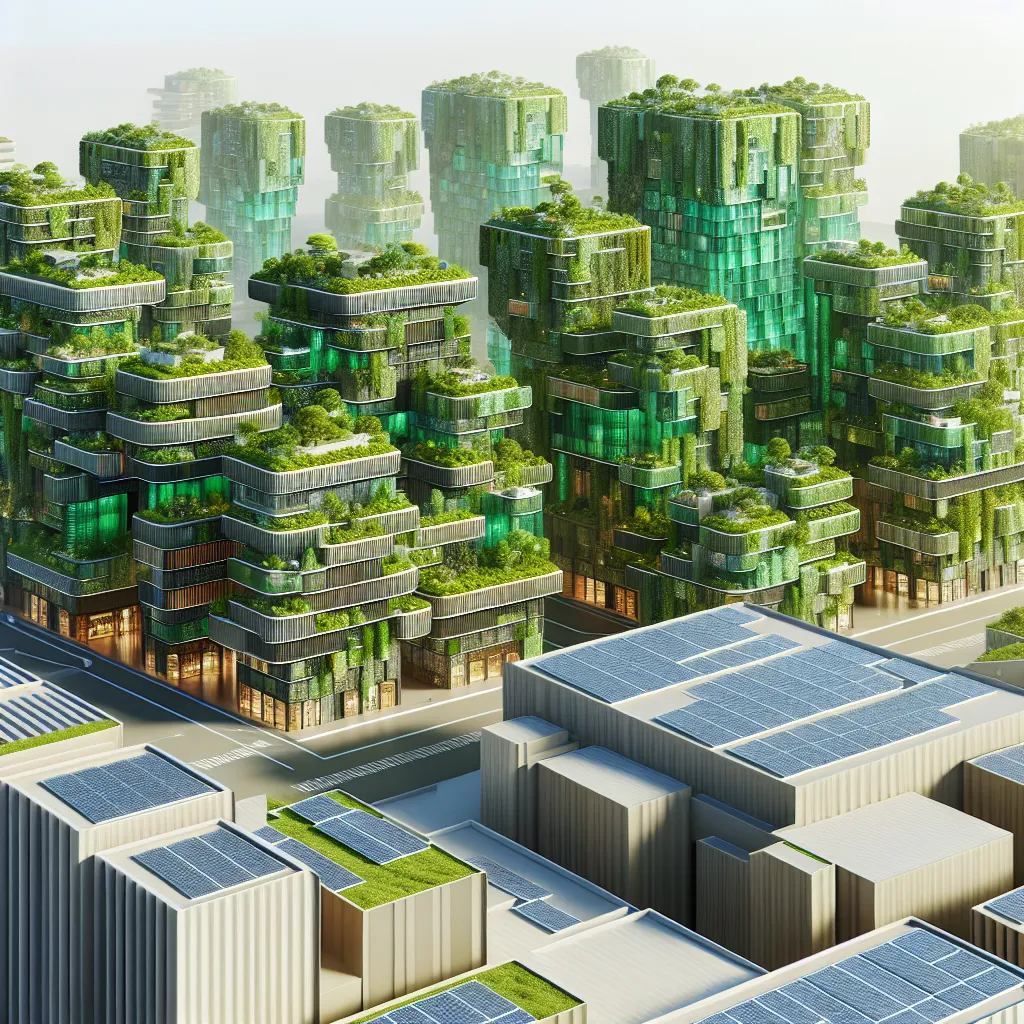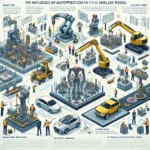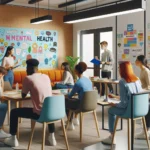Welcome to our IELTS Reading practice test focused on “The Rise of Green Buildings in Urban Environments.” This test is designed to help you prepare for the IELTS Reading section by providing a realistic exam experience with passages and questions that reflect the actual test format.
 Green buildings in urban skyline
Green buildings in urban skyline
Introduction
The IELTS Reading test is a crucial component of the IELTS exam, assessing your ability to comprehend complex texts and identify key information. This practice test consists of three passages of increasing difficulty, each followed by a set of questions. The topic of green buildings in urban environments is not only relevant to the IELTS exam but also reflects current global trends in sustainable urban development.
Passage 1 (Easy Text)
The Emergence of Green Buildings
Green buildings have become increasingly popular in urban environments over the past few decades. These structures are designed to be environmentally responsible and resource-efficient throughout their life cycle, from construction to demolition. The concept of green buildings emerged as a response to growing concerns about climate change and the need for sustainable urban development.
One of the primary features of green buildings is their energy efficiency. They often incorporate solar panels, wind turbines, or geothermal systems to generate clean energy. Additionally, these buildings use high-quality insulation materials and energy-efficient appliances to reduce overall energy consumption.
Water conservation is another crucial aspect of green buildings. Many of these structures incorporate rainwater harvesting systems and greywater recycling to minimize water waste. Low-flow fixtures and drought-resistant landscaping are also common features that contribute to water efficiency.
Green buildings often utilize sustainable materials in their construction. These may include recycled or locally sourced materials, which reduce the carbon footprint associated with transportation. Biodegradable materials are also favored, as they can be easily disposed of without harming the environment.
The indoor environment of green buildings is designed to promote occupant health and well-being. This includes the use of non-toxic paints and furnishings, as well as systems that ensure proper ventilation and air quality. Many green buildings also incorporate biophilic design elements, which bring nature into the built environment through features like living walls or indoor gardens.
As cities continue to grow and evolve, the rise of green buildings represents a significant step towards creating more sustainable urban environments. These structures not only reduce the environmental impact of our built environment but also offer economic benefits through reduced operating costs and increased property values.
Questions 1-5
Do the following statements agree with the information given in the passage?
Write
TRUE if the statement agrees with the information
FALSE if the statement contradicts the information
NOT GIVEN if there is no information on this
- Green buildings are designed to be environmentally friendly throughout their entire life cycle.
- Solar panels are the only source of clean energy used in green buildings.
- Water conservation in green buildings includes both rainwater harvesting and greywater recycling.
- All materials used in green buildings must be biodegradable.
- Green buildings often incorporate elements of nature in their interior design.
Questions 6-10
Complete the sentences below.
Choose NO MORE THAN TWO WORDS from the passage for each answer.
- Green buildings often use high-quality ___ to reduce energy consumption.
- ___ is used in green buildings to minimize water waste in landscaping.
- The use of ___ in construction helps reduce the carbon footprint associated with transportation.
- Green buildings use ___ paints to promote occupant health.
- The rise of green buildings is a step towards creating more ___ urban environments.
Passage 2 (Medium Text)
The Economic and Environmental Impact of Green Buildings
The proliferation of green buildings in urban landscapes is not merely an architectural trend but a paradigm shift in how we conceptualize the relationship between the built environment and nature. This shift is driven by a complex interplay of economic incentives, environmental imperatives, and technological advancements.
From an economic perspective, green buildings offer substantial long-term benefits despite higher initial construction costs. Studies have consistently shown that green buildings command premium rental rates and higher property values. A report by the World Green Building Council found that green-certified buildings can achieve rental premiums of up to 17% and sales premiums of up to 23%. This increased value is attributed to lower operating costs, enhanced marketability, and the growing demand for sustainable living and working spaces.
The operational cost savings of green buildings are particularly noteworthy. Energy-efficient systems and water conservation measures can lead to significant reductions in utility bills. For instance, the Empire State Building’s green retrofit resulted in annual energy savings of $4.4 million, demonstrating the potential for substantial cost reductions even in older structures.
From an environmental standpoint, the impact of green buildings is profound. The building sector accounts for approximately 39% of global energy-related carbon emissions. Green buildings, through their energy-efficient design and operation, can substantially reduce this carbon footprint. A study by the U.S. Green Building Council found that LEED-certified buildings have 34% lower CO2 emissions compared to their conventional counterparts.
Moreover, green buildings contribute to biodiversity conservation in urban areas. Green roofs and walls provide habitats for various species, helping to maintain ecological balance in cities. These features also mitigate the urban heat island effect, which can have significant implications for urban climate resilience.
The rise of green buildings has also spurred innovation in the construction and materials industry. The demand for sustainable building materials has led to the development of new products, such as low-carbon concrete, recycled steel, and bio-based insulation materials. This not only reduces the environmental impact of construction but also drives economic growth in the green technology sector.
However, the transition to green buildings is not without challenges. The upfront costs of green technologies and materials can be a deterrent, particularly in developing countries. There is also a need for standardized metrics to measure and compare the performance of green buildings across different contexts.
Despite these challenges, the momentum behind green buildings continues to grow. Governments worldwide are implementing policies and incentives to promote sustainable construction. For instance, Singapore’s Green Mark Scheme provides financial incentives for developers who incorporate green features in their buildings.
As urban populations continue to expand, the imperative for sustainable urban development becomes increasingly urgent. Green buildings represent a crucial component of this sustainability agenda, offering a path to reduce environmental impact while enhancing economic value and quality of life in our cities.
Questions 11-14
Choose the correct letter, A, B, C, or D.
-
According to the passage, green buildings can achieve:
A) Rental premiums of up to 23%
B) Sales premiums of up to 17%
C) Rental premiums of up to 17%
D) Sales premiums of up to 34% -
The Empire State Building’s green retrofit resulted in:
A) $4.4 million in construction costs
B) $4.4 million in annual energy savings
C) 34% lower CO2 emissions
D) 39% reduction in carbon emissions -
The building sector accounts for approximately what percentage of global energy-related carbon emissions?
A) 17%
B) 23%
C) 34%
D) 39% -
Which of the following is NOT mentioned as a challenge in the transition to green buildings?
A) High upfront costs
B) Lack of skilled workers
C) Need for standardized metrics
D) Deterrent for developing countries
Questions 15-19
Complete the summary below.
Choose NO MORE THAN TWO WORDS from the passage for each answer.
Green buildings offer significant economic benefits, including higher 15) and increased property values. They also provide 16) through reduced utility bills. Environmentally, green buildings help reduce the carbon footprint of the building sector and contribute to 17) in urban areas. The demand for green buildings has led to innovation in the construction industry, such as the development of 18). Despite challenges like high upfront costs, governments are implementing policies to promote sustainable construction, such as Singapore’s 19)___.
Question 20
Choose the correct letter, A, B, C or D.
- What is the main purpose of this passage?
A) To criticize traditional building practices
B) To highlight the challenges of green building construction
C) To explain the economic and environmental impacts of green buildings
D) To promote government policies on sustainable construction
Passage 3 (Hard Text)
The Technological Revolution in Green Building Design
The advent of green buildings in urban environments represents a confluence of architectural innovation, environmental consciousness, and technological advancement. This synergy has given rise to a new era in building design, where cutting-edge technologies are seamlessly integrated with ecological principles to create structures that are not only sustainable but also intelligent and adaptive.
One of the most significant technological breakthroughs in green building design is the development of advanced building management systems (BMS). These sophisticated software platforms utilize artificial intelligence and machine learning algorithms to optimize a building’s performance in real-time. By analyzing data from a multitude of sensors dispersed throughout the structure, BMS can adjust lighting, heating, cooling, and ventilation systems to maximize energy efficiency while maintaining optimal comfort levels for occupants. This dynamic responsiveness represents a paradigm shift from the static, predefined operational parameters of traditional buildings.
The integration of Internet of Things (IoT) devices has further enhanced the capabilities of green buildings. IoT sensors can monitor everything from air quality and humidity levels to occupancy patterns and equipment performance. This wealth of data enables predictive maintenance, reducing downtime and extending the lifespan of building systems. Moreover, IoT devices facilitate the creation of “digital twins” – virtual replicas of physical buildings that can be used to simulate and optimize performance under various conditions.
Advancements in material science have also played a crucial role in the evolution of green buildings. Nanomaterials, for instance, are being employed to create self-cleaning surfaces that reduce the need for chemical cleaners and improve air quality. Photocatalytic materials incorporated into building facades can actively break down air pollutants, transforming buildings from passive structures into active environmental remediation agents. Phase-change materials (PCMs) are being used to enhance thermal regulation, absorbing excess heat during the day and releasing it at night, thus reducing the load on HVAC systems.
The field of building-integrated photovoltaics (BIPV) has seen remarkable progress, with new technologies allowing solar cells to be seamlessly incorporated into building materials such as windows, facades, and roofing tiles. This integration not only improves the aesthetic appeal of solar technology but also increases the potential for on-site renewable energy generation. Innovations like perovskite solar cells, which offer higher efficiency and lower production costs compared to traditional silicon cells, are poised to revolutionize the BIPV landscape.
3D printing technology is making inroads into green building construction, offering the potential for reduced waste, lower transportation costs, and greater design flexibility. Entire building components, and in some cases entire structures, can be 3D printed using sustainable materials such as recycled plastics or locally sourced natural materials. This technology not only reduces the carbon footprint associated with construction but also allows for the creation of complex, organic forms that can enhance a building’s environmental performance.
The concept of biomimicry – emulating nature’s time-tested patterns and strategies – is gaining traction in green building design. Architects and engineers are looking to biological systems for inspiration in creating more efficient and sustainable structures. For example, building ventilation systems inspired by termite mounds have been shown to reduce energy consumption by up to 40% compared to conventional systems.
Despite these technological advancements, the green building sector faces challenges in terms of standardization and interoperability. The proliferation of proprietary technologies and protocols can lead to fragmentation, hindering widespread adoption and integration. Efforts are underway to develop open standards and protocols that will allow for seamless communication between different systems and devices.
The cybersecurity implications of increasingly connected and automated buildings also present a significant concern. As buildings become more reliant on digital systems, they become potential targets for cyberattacks that could compromise not only data but also the physical safety and comfort of occupants. Robust security measures and protocols are essential to mitigate these risks.
Looking to the future, emerging technologies such as quantum computing and advanced AI hold the promise of further revolutionizing green building design. Quantum computing could enable complex simulations and optimizations that are currently infeasible, potentially leading to breakthrough designs in energy efficiency and resource utilization. Advanced AI could facilitate the development of truly autonomous buildings capable of learning and adapting to changing environmental conditions and user needs without human intervention.
The technological revolution in green building design is transforming our urban landscapes, creating structures that are not only more sustainable but also more responsive, efficient, and in harmony with the natural environment. As these technologies continue to evolve and converge, they hold the potential to address some of the most pressing environmental challenges facing our cities, paving the way for a more sustainable and resilient urban future.
Questions 21-26
Complete the sentences below.
Choose NO MORE THAN TWO WORDS from the passage for each answer.
-
___ use AI and machine learning to optimize a building’s performance in real-time.
-
IoT devices enable the creation of ___, which are virtual replicas of physical buildings.
-
___ are being used to create self-cleaning surfaces in green buildings.
-
___ incorporated into building facades can actively break down air pollutants.
-
___ allow solar cells to be seamlessly incorporated into building materials.
-
Building ventilation systems inspired by ___ have been shown to reduce energy consumption significantly.
Questions 27-32
Do the following statements agree with the information given in the passage?
Write
TRUE if the statement agrees with the information
FALSE if the statement contradicts the information
NOT GIVEN if there is no information on this
-
Advanced building management systems can adjust building systems based on real-time data analysis.
-
Internet of Things devices in green buildings can only monitor air quality and humidity levels.
-
Photocatalytic materials in building facades can improve indoor air quality.
-
3D printing technology in green building construction always results in higher transportation costs.
-
The concept of biomimicry in green building design involves copying natural patterns and strategies.
-
Quantum computing is currently being used to optimize energy efficiency in green buildings.
Questions 33-36
Choose the correct letter, A, B, C, or D.
-
According to the passage, which of the following is a challenge facing the green building sector?
A) Lack of technological advancements
B) Insufficient data from IoT devices
C) Standardization and interoperability issues
D) Limited potential for renewable energy generation -
The passage suggests that the cybersecurity of green buildings is:
A) A minor concern
B) Fully resolved
C) A significant issue
D) Not related to physical safety -
Which of the following is NOT mentioned as a potential benefit of 3D printing in green building construction?
A) Reduced waste
B) Lower transportation costs
C) Greater design flexibility
D) Increased construction speed -
The passage implies that the future of green building design may involve:
A) Less reliance on technology
B) More human intervention in building management
C) Buildings that can adapt autonomously to changing conditions
D) A return to traditional construction methods
Answer Key
Passage 1
- TRUE
- FALSE
- TRUE
- FALSE
- TRUE
- insulation
- drought-resistant landscaping
- locally sourced materials
- non-toxic
- sustainable
Passage 2
- C
- B
- D
- B
- rental rates
- operational cost savings
- biodiversity conservation
- low-carbon concrete
- Green Mark Scheme
- C
Passage 3
- Advanced building management systems
- digital twins
- Nanomaterials
- Photocatalytic materials
- Building-integrated photovoltaics
- termite mounds
- TRUE
- FALSE
- NOT GIVEN
- FALSE
- TRUE
- FALSE
- C
- C
- D
- C
This practice test covers various aspects of green buildings in urban environments, from basic concepts to advanced technological applications. It provides a comprehensive overview of the topic while testing your reading comprehension skills in the IELTS format. Remember to practice time management and develop strategies for quickly identifying key information in the passages.
For more IELTS preparation materials, you might find these related articles helpful:
- The Rise of Smart Grids in Modern Cities
- How Urban Sprawl is Affecting Biodiversity
- The Rise of Green Architecture in Sustainable Cities
Good luck with your IELTS preparation!


